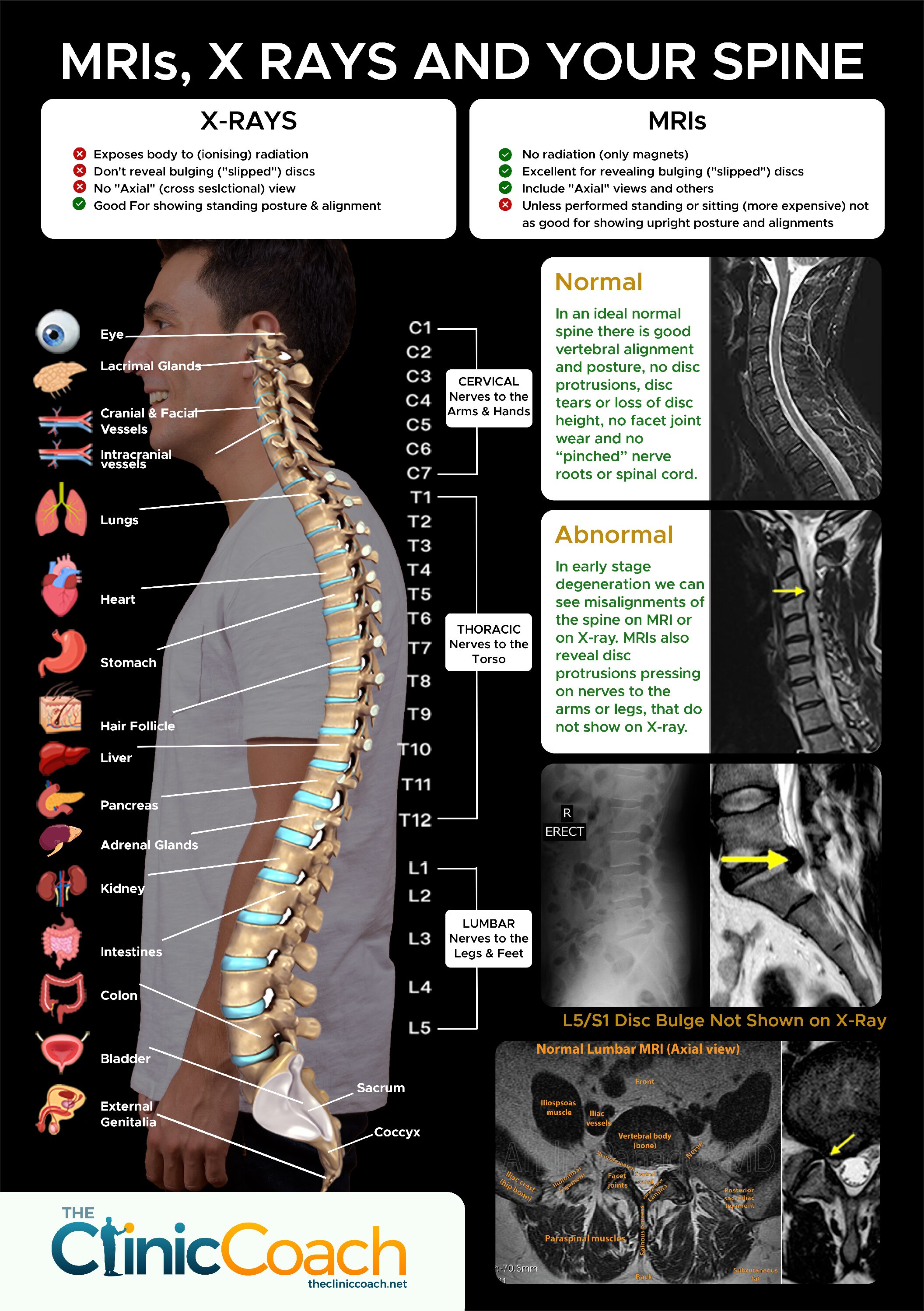Diagnostics
Imaging such as MRI and X-rays are performed at our various partner centres throughout London and Essex
Discover more about the Spine Plus diagnostic services via the links below.
MRI Scans
MRI Scan
Magnetic Resonance Imaging (MRI) uses magnets and radiowaves to construct slice by slice computer images of the inside of a patients body. The images show all the relevant tissues including bone, nerve, disc, ligament etc. On average, these scans take half an hour and involve lying very still inside a tunnel, although newer versions use open or even seated scanners (see below).
Open MRI Scan
Some patients find lying still in the tunnel of standard MRI scans very claustrophobic. Open MRI scan machines do not feature a tunnel but an open bed similar to an x-ray machine.
Seated / Upright MRI Scan
Upright MRI scans are another version of open MRI scans but rather than lying down, the scans are performed with the patient sitting or standing. This may reveal problems such as disc bulging that is not evident when the spine is not subject to the loading of body weight (such as with standard MRI scans performed with the patient lying down).
3T MRI scan
The latest breed of MRI scans feature “3T” scanning, which gives a higher image resolution than the older 1.5T scanners.
X-Rays
X-ray
X-rays are relatively quick and cheap to perform, however they do involve exposing the patient to an amount of x-ray radiation and they only really show bone tissue. Their main purpose is to highlight problems such as bone fractures, infections, bone spikes (osteophytes), bone tumours bony alignment (e.g. in the case of standing spinal X-rays). Normal age related wear and tear commonly shows up on x-ray and is often unrelated to symptoms. Conversely, a normal x-ray does rule out problems with non-bony structures of the spine such as the discs, ligaments and nerves.
Dynamic (Functional) X-ray
Rather than taking an x-ray of the spine lying down, dynamic functional x-rays are performed with the patient sitting, standing, bending forward and / or bending backwards. This can give valuable information about foraminal volumes, scoliosis, facet joint hypertrophy and osteophytes, prior surgery, gas in the disc, degree of anterior listhesis, retrolisthesis, spondylolytic spondylolisthesis, pelvic tilt and which segments of the spine are over or under working when moving. This information may not be observable on standard (lying down) x-ray or (lying down) MRI scans.
Ultrasound
Ultrasound scans are very useful for assessing damage in muscles, ligaments and tendons that lie relatively near the surface. This particular use is mostly reserved for problems in peripheral joints such as the shoulder, elbow, wrist, knee and ankle.
Ultrasound is of limited use for spinal problems.
SPECT CT
Single Photon Computed Tomography (SPECT) uses a radioactive chemical (tracer) which is injected into the blood stream and attaches to areas of unusual metabolic activity, so called “hot spots” which often indicate sites of pain generation which may not have previously been identified on other diagnostic imaging, such as MRI or X-ray. By combining a SPECT scan with a (low field – low radiation) CT scan, better imaging of a pain generating area can be achieved so that exact structures such as ligament, joint capsule or disc can be identified as the source of pain. This information can then lead to a more precise therapeutic intervention.
Other
It is sometimes necessary to refer patients for other tests such as nerve conduction tests or blood tests to fully differentiate between certain conditions. At Spine Plus we have access to the full range of such tests so that we can get to the bottom of your problem.
